
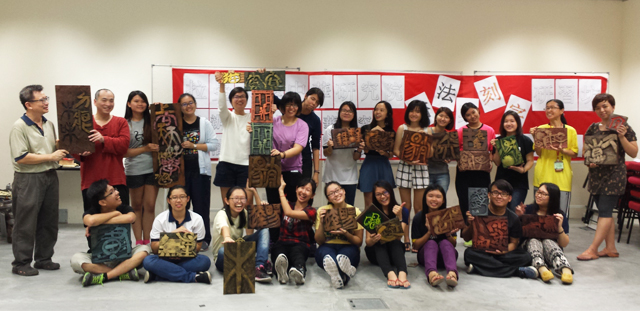
A rewarding experience for all the participants
Renowned Chinese calligrapher Yang Hongzhao was invited by the UTAR Institute of Chinese Studies (ICS) and the Mencius Institute (MI) to conduct the first ICS-MI Chinese Calligraphy Wood Carving Seminar (书法与刻字研习坊) at Kampar Campus on 9 to 15 January 2017. It was sponsored by MI, Nirvana Asia Limited and Bukit Merah Wood Product Sdn Bhd.
Yang is currently the Director-cum-Chief Editor of cnkezi.com (中国刻字艺术网), a member of the Chinese Calligraphers Association, Deputy Secretary-General of Hebei Calligraphers Association Carving Committee and Vice President-cum-Deputy Secretary-General of Xingtai Calligraphers Association Carving Art Research Committee. He actively donates his time to teach calligraphy and art in China.
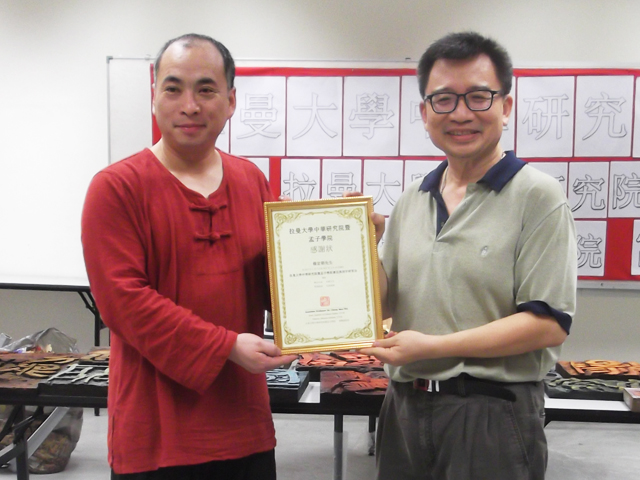
Dr Lim (right) presenting a token of appreciation to Yang
The one-week seminar aimed to promote the art of Chinese calligraphy wood carving and to nurture the participants’ talent through the uniqueness of the art form. Twenty-five students and staff participated in the seminar where they successfully produced more than 30 wood works.
The seminar conducted both theoretical and practical sessions, whose content included the art of carving, the development of modern carving, techniques of carving, rules of chisel usage, colour and the three dimensional structure of carvings.
ICS Head of Chinese Art Research Unit Dr Lim Chee Men said, “Chinese calligraphy wood carving is not common in Malaysia, but I believe this seminar will be a good kickstart to the development our history of Chinese calligraphy wood carving where it can slowly progress from here. This seminar is much bigger and more official compared with the wood carving interest classes that we organised previously. The most gratifying part is the improvement and growth in our students’ carving skills after the seminar.”
He added, “Aesthetics courses are rare in our country, but I hope for more such positive developments in the future. The academic performance of students is important, but students’ immersion in the humanities should also be taken seriously for a more balanced and comprehensive character development.” He wished for an artwork workshop to be set up in the campus for calligraphy wood carving and other artistic pursuits as “a real workshop will provide a physical environment for students to have more specific learning and practical experiences”.
As it was Yang’s first time conducting a seminar in Malaysia, he thanked ICS and MI for the invitation, arrangements, and for providing him a platform to meet and share his experience with Chinese calligraphy wood carving to UTAR students. He praised the participants’ learning attitude and performance, saying, “Their comprehension of Chinese calligraphy is strong and solid, and they gave me their full cooperation and earnestness during the seminar. Even those who got slightly injured undertook to complete their work; it was very moving.”
He added, “The participants were creative and brave in expressing their ideas and preferences through their works.” His encouraged lovers of Chinese calligraphy wood carving to integrate their art with the culture and humanism of Malaysia. “I believe that the infusion of Malaysia’s diverse cultures can bring more rich and unique inspiration to the carvers.”
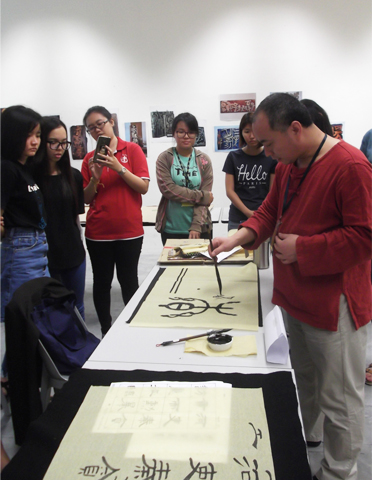
Yang explaining on the importance of calligraphic training

Participants emulating the ancient masters

Yang demonstrating chisel sharpening (left) and wood carving (right) techniques

The slow meticulous work of carving
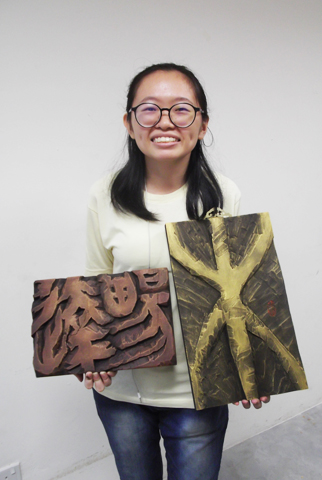
Tan with her work “chang da (畅达)” and “mu (木)”
Chinese Studies student Tan Jia Ling, who has two and a half years of experience in Chinese calligraphy wood carving, said, “I gained many rewarding experiences from the seminar while learning different methods of wood carving and developing a deep understanding of wood carving knowledge and skills. This will help to elevate my wood carving creations and provide me with inspiration for the future direction my wood carving takes.” Tan was the prolific participant who produced three pieces successfully, namely “chang da”, “mu” and a third depicting the Chinese character for the surname Yang.
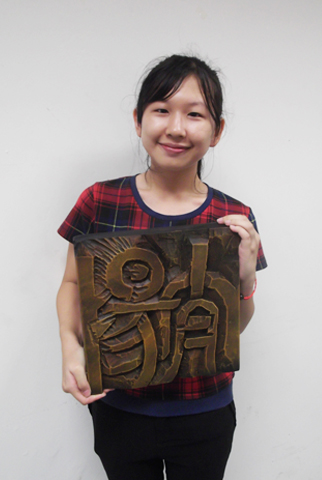
Lim with her work “tai yang (太阳)”
Lim Chia Yen, another Chinese Studies student, said, “This seminar has been an unforgettable experience for me. It was a rare opportunity for us to learn from a renowned calligraphy and wood carving teacher from China. Wood carving is hard but fortunately I completed my artwork “tai yang” successfully, and I’d like to thank Teacher Yang for his patient guidance.”
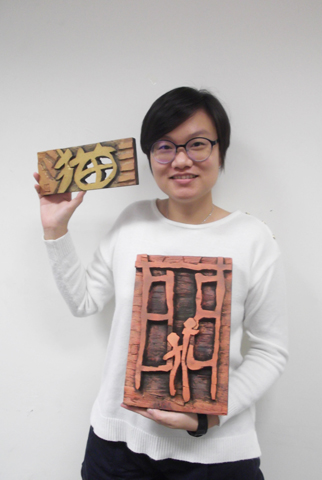
Chai with her creations “kai (开)” and “mao (猫)”
One of the participating staff, Assistant Manager of Division of Programme Promotion Chai Wei See mentioned, “Wood carving is more difficult than expected, but to accomplish we must withstand all hardships. From the seminar, I learnt that calligraphy can be rendered in many different styles and scripts.” She produced two woodworks — “kai” and “mao” — successfully.
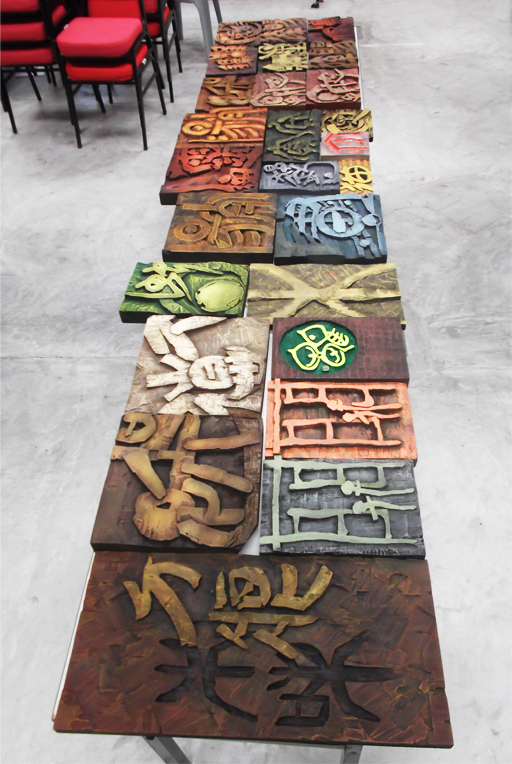
The sweet rewards of all their labour
© 2019 UNIVERSITI TUNKU ABDUL RAHMAN DU012(A).
Wholly owned by UTAR Education Foundation Co. No. 578227-M LEGAL STATEMENT TERM OF USAGE PRIVACY NOTICE